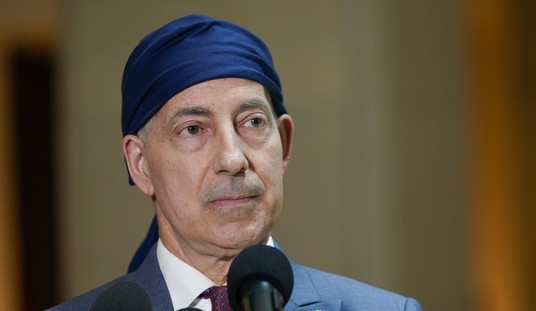ISIS assured the world last May that they would not destroy the ancient ruins in Palmyra, but according to activists in the region, the jihadi 7th century throwbacks just couldn’t help themselves.
Whether it happened, yesterday, or a month ago, the two human rights activists making the claim agree that an ancient temple has been destroyed.
Islamic State militants have destroyed a temple at Syria’s ancient ruins of Palmyra, activists said Sunday, realizing the worst fears archaeologists had for the 2,000-year-old Roman-era city after the extremists seized it and beheaded a local scholar.
Palmyra, one of the Middle East’s most spectacular archaeological sites and a UNESCO World Heritage site, sits near the modern Syrian city of the same name. Activists said the militants used explosives to blow up the Baalshamin Temple on its grounds, the blast so powerful it also damaged some of the Roman columns around it.
The Britain-based Syrian Observatory for Human Rights said Sunday night that the temple was blown up a month ago. Turkey-based activist Osama al-Khatib, who is originally from Palmyra, said the temple was blown up Sunday. Both said the extremists used a large amount of explosives to destroy it.
Both activists relied on information for those still in Palmyra and the discrepancy in their accounts could not be immediately reconciled, though such contradictory information is common in Syria’s long civil war.
News of the temple’s destruction follows the grisly beheading of Khaled al-Asaad, an 81-year-old antiquities scholar, last week, at the hands of the Islamic State. Asaad had devoted his life to studying Palmyra, and had named his daughter after Zenobia, a Palmyran queen from 1,700 years ago. His bloodied, headless body was reportedly hung on a pole.
http://www.youtube.com/watch?v=r41RN6tb9sU
Last spring, the Islamic State raised hopes that most — if not all — of the magnificent ruins of Palmyra would be spared when they vowed to destroy only statues deemed polytheistic.
An 87-second video released by one of the militant group’s media arms on Wednesday shows parts of the ancient city’s ruins and colonnades – the Temple of Bel and the Roman theatre – apparently undamaged and empty.
“They haven’t been damaged and members of the organisation told residents that they will not damage the city’s antiquities, but will destroy the idols,” an activist with the anti-regime Local Coordination Committee for Tadmur, the modern name for Palmyra, said. “Perhaps it’s because the Palmyra antiquities are mostly columns and large buildings and not statues of people, which they consider idols that must be destroyed, and they have no problem with the other antiquities.”
It should be no surprise, however, that savages who slaughter innocents for sport also have no problem destroying ancient ruins. It’s something they’ve been doing all along.
The head of UNESCO, Irina Bokova, said Friday that Islamic State extremists in Syria and Iraq are engaged in the “most brutal, systematic” destruction of ancient sites since World War II — a stark warning that came hours after militants demolished the St. Elian Monastery, which housed a fifth-century tomb and served as a major pilgrimage site. The monastery was in the town of Qaryatain in central Syria.









Join the conversation as a VIP Member